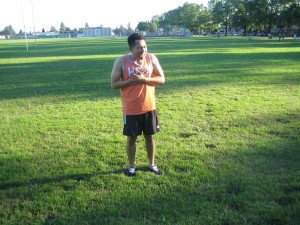Thumb arthritis is the most prevalent type of osteoarthritis that affects the hand. Basal joint arthritis and thumb arthritis happens when the cartilage that functions in cushioning wears out from the adjacent ends of the bones that form the thumb joints or carpometacarpal joints. Thumb arthritis causes severe hand swelling, pain and reduced strength and range of motion and there is difficulty in doing simple household task like turning doorknobs and opening jars. If you want to learn more about this condition, read here.
Symptoms of thumb arthritis
- The range of motion is reduced
- Diminished strength during pinching or holding objects
- There is inflammation, rigidity and tenderness can be felt at the bottom part of the thumb
- An engorged, bone-like or out-of-joint appearance of the joints at the bottom part of the thumb.

There are factors that increase the risk of having thumb arthritis like being a female with age 40 and older. Those who have hereditary conditions like joint ligament laxity and joints that are not properly formed or malformed joints. Those who also face the risk have diseases that cause changes in the normal structure and function of the cartilage like the rheumatoid arthritis. Those who have experienced injuries to the basal joints like sprains and fractures as well as performing activities and jobs that give an increased stress on the joints also face a high risk.
Treatment and home remedies
- Do range-of-motion exercises that move the thumb through its full range of motion in order to improve the mobility of the joints.
- Modify hand tools like buying jar openers, large pulls for zipper or key turners in order to help people with limited hand strength.
- Apply hot or cold compress alternately to help reduce inflammation and pain and relax the joints.
- If, avoid clenching using the hands when carrying things instead use grocery bags with handles or boxy paper bags which it can be balanced on the hip and arm.
Other treatment options
- Perform thumb circles a number of times in a day in order to maintain good range of motion, by making a fist with the thumb, then rotate the thumb in a clockwise manner and then counter clockwise. This must be done at least for one to two minutes.
- Squeeze a soft ball or a soft rubber ball, using all fingers. Indent the ball gently with the thumb for 20 to 30 seconds.
- For pain that feels like burning, apply an ice pack in order to minimize inflammation. You can freeze water in a cup and massage the ice over the affected area. For lingering dismal ache, place warm towel in the affected area or immerse the thumb into a warm bath with a mixture of Epsom salt.
- Paraffin wax dip for the thumb and hands can also help. The hot wax will transfer the heat into the bones and will improve circulation.
- Use a thumb splint so that the person will find to easier to hold objects minus causing pain and this is helpful if doing monotonous movements such as pinching.
